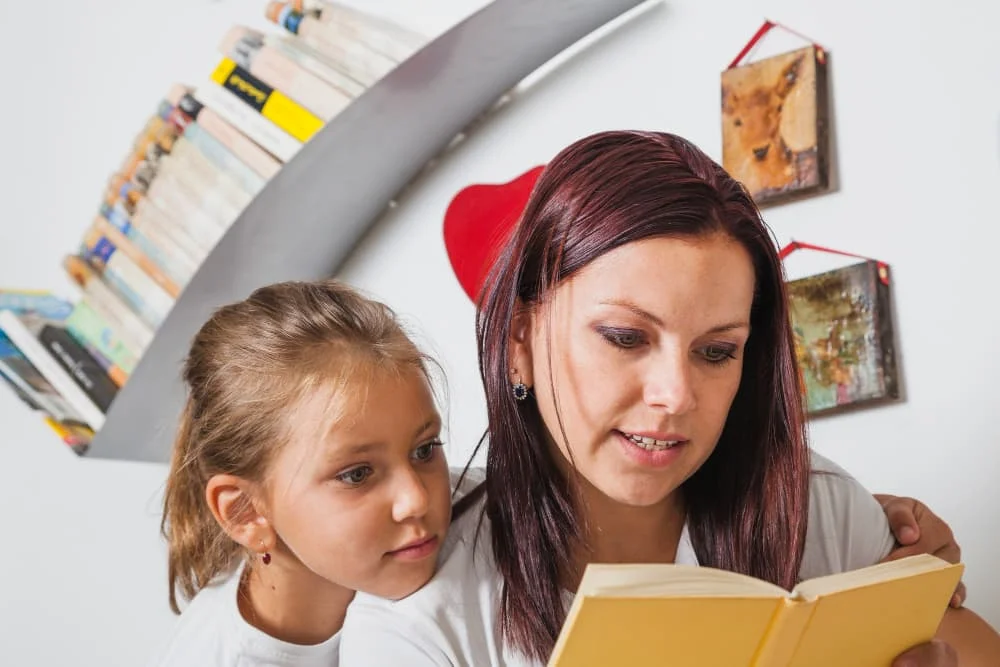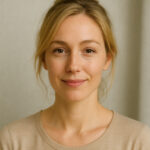Non-Verbal Learning Disorder (NVLD) is a neurological condition that affects how a person interprets and responds to nonverbal cues like body language, facial expressions, and spatial awareness. People with this condition often excel in verbal skills such as reading and memorization but may struggle with spatial reasoning, motor coordination, and social interactions.
Although not widely recognized, this disorder can impact academic performance, daily life, and relationships. This guide will help you understand its symptoms, diagnosis, and treatment options in a clear and accessible way.
What is Non-Verbal Learning Disorder (NVLD)?
Despite its name, this disorder does not affect verbal ability. Many individuals have a strong vocabulary and excellent memory, but difficulties arise in processing nonverbal information, leading to challenges in:
- 🗣️ Social interactions – Understanding tone of voice, facial expressions, and sarcasm can be difficult.
- 📍 Spatial awareness – Struggles with judging distances, reading maps, and organizing surroundings.
- ✍️ Motor coordination – Tasks like handwriting, tying shoelaces, or playing sports may be challenging.
Different for Everyone
The severity of symptoms varies from person to person. Some may have more difficulty with spatial reasoning, while others find social interactions particularly challenging. Motor coordination issues can range from mild to severe.
📌 Early diagnosis and proper support can help individuals develop strategies to build on their strengths and manage everyday challenges more effectively.
Recognizing the Signs: Symptoms of NVLD
Identifying Non-Verbal Learning Disorder (NVLD) can be challenging because its symptoms often overlap with other conditions. However, recognizing its core features is essential for early intervention and support.
This condition primarily affects five areas:
1️⃣ Visual-Spatial Skills
2️⃣ Social Interactions
3️⃣ Motor Coordination
4️⃣ Executive Functioning
5️⃣ Academic Performance

1. Visual-Spatial Difficulties
People with NVLD often have trouble processing visual information, leading to challenges such as:
🔹 Difficulty reading maps, graphs, or diagrams
🔹 Struggles with judging distances and spatial relationships (e.g., navigating a crowded room, parking a car)
🔹 Trouble recognizing faces or remembering locations
🔹 Challenges understanding abstract visual concepts (e.g., geometry, puzzles)
2. Social Challenges
Because nonverbal cues are harder to interpret, social interactions can be overwhelming. Common difficulties include:
🗣️ Recognizing facial expressions, body language, and tone of voice
😕 Understanding sarcasm, humor, and subtle social cues
🤝 Initiating and maintaining conversations
📌 Navigating unspoken social rules, which may lead to social awkwardness or difficulty making friends
Individuals with NVLD may unintentionally offend others or struggle to form close relationships due to these challenges.
3. Motor Coordination Issues
NVLD can affect both fine and gross motor skills, leading to:
🚶 Clumsiness and balance issues
✍️ Poor handwriting and difficulty with fine motor tasks (e.g., tying shoelaces, using scissors)
⚽ Awkward movements or difficulty participating in sports
These challenges can impact everyday tasks and physical activities, making coordination-based activities more frustrating.
4. Executive Functioning Difficulties
Executive functions help with planning, organization, and adapting to new situations. Common struggles include:
📦 Managing belongings and daily tasks
📝 Following multi-step directions
⏳ Adapting to changes in routine
📊 Prioritizing and managing time effectively
Because of these difficulties, individuals may appear disorganized or struggle with daily responsibilities.
5. Academic Struggles
While verbal subjects are often a strength, subjects that require spatial reasoning or abstract thinking can be challenging. Difficulties may include:
📐 Struggles with math, especially geometry and interpreting charts
📝 Difficulty organizing thoughts in written assignments
🔬 Challenges with subjects requiring hands-on learning
These difficulties can affect academic performance and confidence, making school a stressful experience.
How Symptoms Change Over Time
The way NVLD presents itself can evolve with age:
👦 Childhood – Difficulty with puzzles, playground coordination, and making friends.
🧑🎓 Teenage Years – Increased struggles with organization, written assignments, and social dynamics.
🧑💼 Adulthood – Challenges with time management, workplace interactions, and independent living skills.
📌 Recognizing these changes early allows for better support and intervention at each stage of life.nation, while a teenager could experience greater difficulty with organization, written assignments, and navigating complex social dynamics.

NVLD vs. Autism: Understanding the Differences
Both Non-Verbal Learning Disorder (NVLD) and Autism Spectrum Disorder (ASD) can affect social interactions, but they are distinct conditions with different neurological causes. Understanding these differences is crucial for accurate diagnosis and appropriate support.
Is NVLD a Form of Autism?
No, NVLD is not a form of autism. While both conditions involve social difficulties, their root causes and defining characteristics are different.
Key Differences Between NVLD and Autism:
| Feature | NVLD | Autism (ASD) |
|---|---|---|
| Social Challenges | Struggles with nonverbal cues (body language, facial expressions, tone of voice) but often desires social interaction. | Difficulty with both verbal and nonverbal communication; may prefer solitude or have intense, focused interests. |
| Verbal vs. Nonverbal Strengths | Strong verbal skills, struggles with visual-spatial processing. | Language development can be delayed or atypical; may have challenges in both verbal and nonverbal communication. |
| Cognitive Patterns | Struggles with abstract thinking and flexible problem-solving. | Can have rigid thought patterns, repetitive behaviors, and strong special interests. |
| Motor Skills & Coordination | Often struggles with fine and gross motor skills (e.g., handwriting, balance, coordination). | Motor skills vary; some individuals may have clumsiness, while others excel in certain physical activities. |
| Behavioral Traits | No repetitive behaviors or sensory sensitivities. | Often exhibits repetitive behaviors (e.g., hand flapping, rocking) and may have sensory processing differences. |
Can a Child Be Nonverbal and Not Autistic?
Yes, a child can be nonverbal without having autism. While some autistic individuals have limited verbal abilities, other conditions can also affect speech development, including:
🔹 Hearing impairments that impact language acquisition
🔹 Developmental delays unrelated to autism
🔹 Speech and language disorders (e.g., apraxia of speech)
🔹 Neurological conditions affecting communication
📌 A specialist, such as a speech-language pathologist or developmental pediatrician, can assess the cause and recommend appropriate interventions.
Are Nonverbal Autistic Individuals Intelligent?
Yes. Being nonverbal does not indicate a lack of intelligence. Verbal ability and cognitive function are not the same—some nonverbal autistic individuals have intellectual disabilities, while others have average or above-average intelligence but struggle to express themselves through speech.
Many nonverbal individuals communicate using alternative methods, such as:
💬 Augmentative and Alternative Communication (AAC) devices
🤟 Sign language
✍️ Writing or picture-based communication systems
📌 Intelligence and capability are expressed in many ways beyond spoken language. Avoid making assumptions based on speech ability.

Diagnosing NVLD
There is no single medical test to diagnose Non-Verbal Learning Disorder (NVLD). Instead, a comprehensive evaluation by a specialist is required to differentiate it from other conditions with overlapping symptoms.
How Do I Know If I Have NVLD?
If you suspect that you or your child may have NVLD, the first step is to consult a specialist, such as:
✔ Clinical psychologist
✔ Neuropsychologist
✔ Educational psychologist
These professionals use various assessments to determine whether NVLD is present.
Who Can Diagnose NVLD?
Only licensed professionals, such as psychologists or neuropsychologists, can make an official diagnosis. While parents and teachers may notice symptoms, a formal assessment is necessary to confirm the condition and develop an appropriate support plan.
Why Is an Accurate Diagnosis Important?
A proper diagnosis ensures individuals receive the right accommodations, therapies, and educational support to help them manage their challenges. Early identification leads to better coping strategies, improving academic performance, social interactions, and daily life skills.
The Diagnostic Process
A thorough evaluation typically includes:
1. Detailed Interviews
The specialist collects information about:
- 📌 Developmental history
- 📚 Academic performance
- 🤝 Social interactions and behavioral patterns
- 🏡 Challenges in daily life
2. Observation
The evaluator assesses how the individual interacts in different settings, focusing on:
- 🗣️ Social communication skills
- ✋ Motor coordination
- 🔍 Visual-spatial processing
3. Standardized Testing
Various tests measure cognitive strengths and weaknesses, including:
- 🧠 Neuropsychological Tests – Assess visual-spatial reasoning, executive functioning, and motor skills.
- 📝 Intelligence (IQ) Tests – Compare verbal and nonverbal reasoning abilities.
- 📖 Achievement Tests – Evaluate reading, writing, and math skills.
- 📊 Rating Scales & Questionnaires – Completed by parents, teachers, and the individual, assessing:
- Social and emotional challenges
- Executive functioning difficulties
- Daily life struggles

Treatment and Support for NVLD
While there is no cure for Non-Verbal Learning Disorder, early intervention and the right support strategies can significantly improve a person’s ability to navigate daily challenges. A personalized approach based on the individual’s strengths and weaknesses is key to long-term success.
How Is NVLD Treated?
A multidisciplinary approach is often used to support individuals with NVLD. Common interventions include:
1. Educational Therapy
Specialized educational support can help with academic challenges by:
✔ Developing Individualized Education Programs (IEPs)
✔ Teaching specific learning strategies to compensate for weaknesses in spatial reasoning and organization
✔ Providing accommodations in the classroom, such as extra time on tests or preferential seating
2. Speech and Language Therapy
Although verbal skills are often a strength, some individuals benefit from therapy that helps with:
✔ Interpreting nonverbal cues (e.g., facial expressions, gestures, tone of voice)
✔ Pragmatic language skills (understanding social communication)
3. Occupational Therapy
Occupational therapy can assist in improving:
✔ Fine motor skills (e.g., handwriting, using scissors)
✔ Coordination and balance
✔ Sensory processing difficulties, particularly for younger children
4. Social Skills Training
This type of training can help individuals:
✔ Understand and respond to social cues
✔ Improve conversational skills
✔ Build stronger relationships through role-playing and structured activities
5. Psychotherapy
Individual or family therapy can provide support in:
✔ Managing anxiety and emotional challenges
✔ Improving self-esteem
✔ Developing better coping mechanisms for social situations
The Importance of Early Intervention
Early support makes a significant difference in helping individuals with NVLD develop essential skills, gain confidence, and reach their full potential. The earlier interventions begin, the more effectively individuals can adapt and build strategies for long-term success.e long-term outcome for individuals with non verbal learning disability. Early support can help them develop essential skills, build confidence, and reach their full potential.

Living with NVLD: Strategies for Success
Navigating daily life with Non-Verbal Learning Disorder (NVLD) can be challenging, but the right strategies can help individuals thrive in school, work, and social settings.
Practical Strategies for Everyday Life
✔ Stay Organized – Use checklists, planners, and digital reminders to manage tasks. Break large assignments into smaller steps for easier focus.
✔ Develop Social Skills – Practice reading nonverbal cues (facial expressions, gestures, tone) and use role-playing to improve interactions.
✔ Communicate Clearly – Self-advocate by explaining NVLD to teachers, employers, and peers for better support.
✔ Request Accommodations – Ask for extra time on tests, clear written instructions, and structured learning environments in school and work.
Strengths of Individuals with NVLD
While NVLD affects nonverbal processing, many individuals excel in verbal reasoning. Common strengths include:
✔ Strong verbal skills and a rich vocabulary
✔ Advanced reading comprehension and great listening ability
✔ Detail-oriented thinking and structured problem-solving
✔ Strong memorization skills, particularly for facts and patterns
Leveraging these strengths helps build confidence and enables success in careers that prioritize verbal and analytical skills.
Supporting a Child with NVLD
Parents can help their child by:
✔ Starting Early – Seek professional evaluations and therapy for better long-term outcomes.
✔ Creating Structure – Maintain a predictable routine to reduce anxiety.
✔ Using Clear Communication – Give concrete instructions, written notes, and visual aids to support learning.
✔ Encouraging Social Growth – Guide them in interpreting facial expressions and body language through discussions and role-playing.
✔ Advocating for Needs – Work with teachers and school staff to ensure the right accommodations.
✔ Focusing on Strengths – Help them develop confidence by reinforcing what they do well.
With early support, structured guidance, and a strengths-based approach, individuals with NVLD can develop essential skills and navigate life with confidence.

Addressing Concerns and Dispelling Myths
Like many learning disabilities, Non-Verbal Learning Disorder (NVLD) is often misunderstood. Below, we address some common misconceptions about this condition.
Can You Grow Out of NVLD?
🔹 No, NVLD is a lifelong condition, but with the right interventions, individuals can develop coping strategies to navigate challenges more effectively.
✔ Early intervention and educational support significantly improve academic and social skills.
✔ Many adults learn adaptive techniques to manage their difficulties in daily life.
✔ With the right support, individuals can lead independent, fulfilling lives.
While NVLD does not go away, its impact can lessen over time as individuals learn to work around their difficulties.
Does NVLD Worsen with Age?
🚫 No, NVLD does not inherently worsen with age, but the way challenges present themselves can change over time:
✔ Childhood – Struggles may be more apparent in motor skills, visual-spatial reasoning, and early social interactions.
✔ Adolescence & Adulthood – Social difficulties may become more pronounced as social expectations become more complex.
✔ With time and proper support, individuals often improve in areas like organization and executive functioning.
Early intervention and consistent support help individuals develop long-term strategies for success.
Do People with NVLD Have Sensory Issues?
🔹 Sensory processing difficulties are not a core feature of NVLD. However, some individuals may experience sensitivities (e.g., discomfort with loud noises or bright lights), though this is not universal.
✔ Sensory challenges are more commonly linked to Autism Spectrum Disorder (ASD) than NVLD.
✔ If sensory issues are present, occupational therapy and sensory integration techniques can be beneficial.
Recognizing the differences between NVLD and other neurodevelopmental conditions ensures individuals receive the correct diagnosis and the most effective support.






